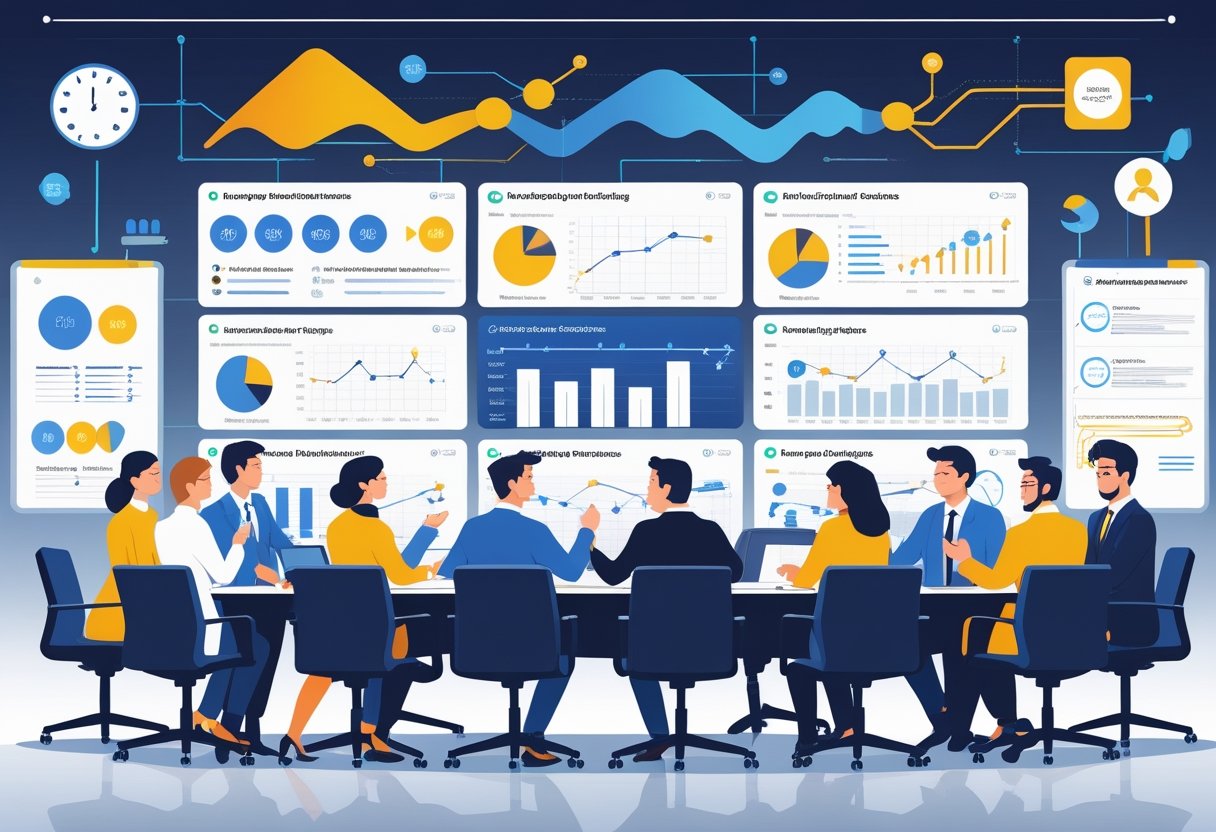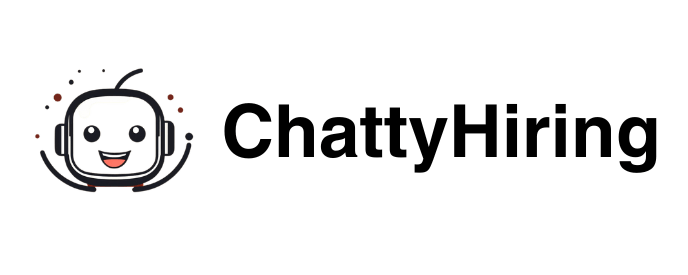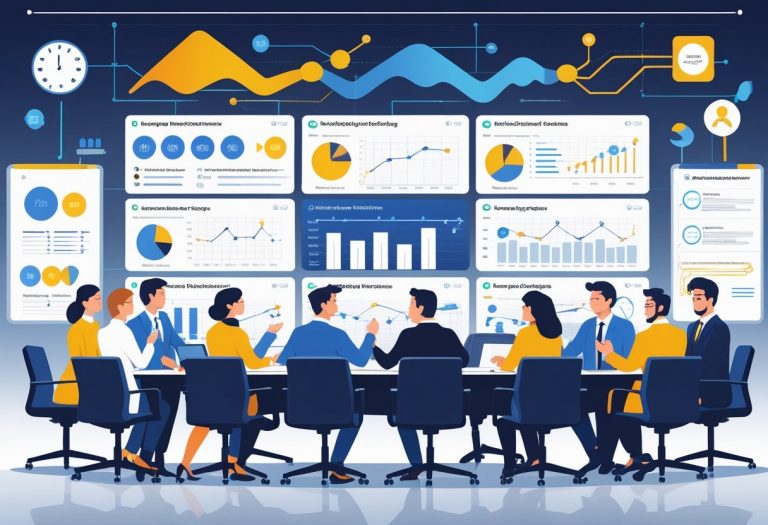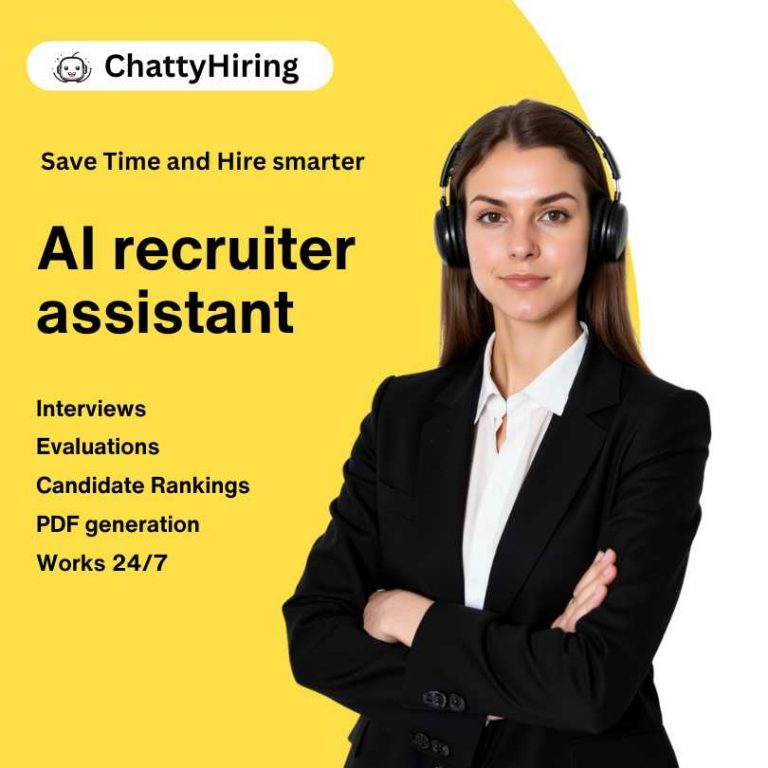High-growth companies face unique challenges that push HR and talent teams way beyond the usual admin work. These organizations need people teams to step up as strategic partners who can scale operations, drive innovation, and protect company culture as they grow fast.

High-growth companies expect HR teams to operate as strategic engines that fuel business growth through talent acquisition, employee engagement, and workforce development. Fast-growing companies invest heavily in recruiting, development, and retention because they know people strategy directly impacts their ability to scale.
The expectations now include building scalable systems, creating engaging work environments, and developing leaders who can handle change. HR teams need to align their efforts with business objectives while making sure compliance and a competitive edge are always in play through strategic talent management.
Strategic Partnership Between HR and Business Goals

High-growth companies want HR leaders who act as real business partners, not just support staff. These organizations expect HR to align people strategy with company goals and drive results through workforce planning, data-driven decisions, and strong change management.
Aligning Workforce Planning with Company Objectives
Effective workforce planning ties talent acquisition directly to business growth targets. HR teams need to forecast skill gaps and talent needs based on company expansion and market trends.
Strategic talent strategies look ahead to spot future skill needs and build talent pipelines. This makes sure the right people are ready when new opportunities pop up.
HR leaders dig into business objectives to figure out staffing needs across departments. They build recruitment strategies that support revenue goals and operational priorities.
Key workforce planning elements include:
- Talent pipeline development for critical roles
- Skills gap analysis aligned with business strategy
- Succession planning for leadership positions
- Cross-functional team building for project needs
Companies get excellent results when HR managers design recruitment strategies that attract talent tailored to organizational needs. This approach cuts hiring costs and boosts employee retention.
Driving Profitability Through Data-Driven Decisions
HR departments now rely on metrics and analytics to show their impact on business outcomes. Data-driven insights help leaders make smart calls about talent investments and resource allocation.
Modern HR teams keep an eye on KPIs that tie directly to profitability. These include employee productivity, turnover costs, and time-to-fill positions.
Critical HR metrics for profitability:
| Metric | Business Impact |
|---|---|
| Employee retention rate | Reduces recruitment costs |
| Revenue per employee | Measures productivity efficiency |
| Training ROI | Shows skill development value |
| Engagement scores | Predicts performance outcomes |
HR leaders use data to prove how talent initiatives affect the bottom line. They connect workforce decisions to financial performance and competitive advantages.
Facilitating Organizational Agility and Change Management
High-growth companies deal with constant change and need HR teams that can support quick pivots. HR pros must help organizations adapt fast while keeping employees engaged and productive.
Change management means HR leaders need to communicate new strategies clearly and guide employees through transitions. They make sure the business stays on track during major shifts.
Change management responsibilities include:
- Leading cultural transformation initiatives
- Supporting leadership development programs
- Managing workforce restructuring efforts
- Implementing new technology adoptions
HR teams set up flexible work policies that fit evolving business needs. They roll out cross-training programs to build versatility and reduce operational risk.
Good change management relies on HR’s ability to keep morale up during transitions. Leaders focus on clear communication and career development to keep top talent on board.
Organizations count on HR to spot resistance early and step in before productivity drops. Quick action keeps momentum moving toward business goals.
HR pros work closely with department heads to make transitions smooth. This teamwork helps minimize disruption and maximize adoption of new systems.
Talent Acquisition and Recruitment for Rapid Growth

High-growth companies have to scale their workforce quickly without sacrificing quality. Success depends on strategic talent acquisition, standout employer branding, and recruitment processes that keep up with shifting workforce expectations.
Designing Competitive Talent Acquisition Strategies
Rapid growth brings unique talent acquisition challenges that need more than just traditional recruiting. Companies growing fast need systematic ways to attract and hire skilled pros efficiently.
Technology-driven recruitment is the backbone of these strategies. Applicant tracking systems and recruitment marketing tools help handle high application volumes and keep screening organized.
Building talent pipelines means having a pool of interested candidates before the need is urgent. This includes:
- Career fair participation and networking events
- Social media engagement with potential candidates
- Continuous relationship building with passive job seekers
Employee referral programs speed up hiring. Employees can tap into their networks and recommend candidates who fit the company culture. Incentives encourage staff to take part in the recruitment process.
Effective talent acquisition strategies for fast-growing companies focus on quickly attracting skilled people who fit company goals and can help scale operations.
Employer Branding and Attracting Top Talent
A strong employer brand sets companies apart in the talent market. Organizations need to clearly communicate their values, culture, and employee perks to attract top candidates.
Company culture communication means showing off commitments to employee growth and well-being. Highlight career advancement opportunities and professional development programs.
The best talent looks for companies with excellent culture, growth potential, and work-life balance. Employer branding is often the deciding factor for candidates in competitive industries.
Key branding elements include:
| Element | Focus Area |
|---|---|
| Values | Mission-driven purpose |
| Culture | Workplace environment |
| Benefits | Compensation packages |
| Growth | Career development |
A strong digital presence on social media and company websites boosts employer branding. Consistent messaging everywhere helps attract candidates who are the right fit.
Adapting Recruitment Processes to Workforce Trends
Modern professionals expect recruitment processes that are fast but still thorough. Companies have to tweak their hiring approaches to match changing preferences and market shifts.
Streamlined processes keep things efficient without lowering quality. This means clear job descriptions, documented screening steps, and interview techniques that can handle a bigger pipeline.
Structured recruitment helps high-growth companies find qualified candidates efficiently and keep hiring consistent across teams.
Remote work and flexible schedules are now standard asks. HR teams update recruitment processes to check for remote collaboration and self-management skills.
Data-driven recruitment uses analytics to improve decisions and candidate experience. Tracking metrics helps spot bottlenecks and speed up hiring.
Cultural fit checks are still crucial, even when hiring quickly. Misaligned hires can lead to higher turnover and disrupt growth.
Employee Engagement and Retention in High-Growth Environments
High-growth companies struggle to keep teams connected and prevent turnover during rapid expansion. Companies report up to 65% better talent retention when they focus on engagement through structured culture initiatives and well-being programs.
Fostering Employee Satisfaction and Workplace Culture
Rapid scaling can water down company culture and create distance between leadership and employees. HR teams need structured ways to maintain trust and connection.
Monthly founder AMA sessions open up direct communication between leadership and staff. These casual meetings help employees get insights and feel included during big changes.
Bringing in new leaders during growth needs careful planning. 30-60-90 listening tours let new managers gather feedback from everyone before making changes.
This approach builds psychological safety and shows inclusion when teams are shifting quickly.
Real-time recognition systems matter as companies grow. Peer-led recognition keeps individual contributions visible and reinforces shared values.
Implementing Effective Employee Engagement Initiatives
Employee engagement drives productivity and retention when HR teams roll out targeted initiatives that adjust to changing needs.
Stretch-and-Support role design helps when promotions are limited during fast growth. Employees get cross-functional projects with mentorship, keeping them engaged and building internal skills.
A software engineer, for example, might help develop onboarding playbooks or improve processes outside their main role.
Data-driven engagement tools catch retention risks early. Pulse surveys and engagement platforms track satisfaction and highlight issues before turnover happens.
Key engagement metrics include:
- Employee Net Promoter Score (eNPS)
- Internal mobility rates
- Time-to-productivity for new hires
- Participation rates in voluntary programs
Regular measurement lets HR teams pivot quickly as new challenges pop up.
Balancing Work-Life and Well-Being
High-growth environments can create serious pressure and risk burnout. HR teams have to get ahead of these issues while keeping productivity up.
Flexible work arrangements are a must during scaling—think remote work, flexible hours, and compressed weeks to help employees juggle extra responsibilities.
Mental health support is more important than ever as stress rises. Employee assistance programs, counseling, and wellness stipends provide needed support.
Well-being initiatives should include:
- Mental health days and sabbatical options
- Ergonomic workspace improvements
- Fitness and wellness subsidies
- Stress management resources
Workload management systems help prevent burnout. HR teams monitor overtime and shift responsibilities when hiring can’t keep up with workload.
Setting boundaries around after-hours communication protects personal time. “No-meeting” periods and clear response expectations help maintain work-life balance.
Advancing Diversity, Equity, and Inclusion
Rapid hiring can unintentionally reduce diversity if inclusion isn’t built in from the start. HR teams must weave equity into every talent process.
Inclusive hiring practices mean structured approaches in fast-paced recruiting. Diverse interview panels, bias training, and standardized evaluations keep things fair.
Mentorship and sponsorship programs are key for underrepresented groups. These relationships offer guidance and opportunities that might be missed during fast growth.
DEI metrics for high-growth companies:
- Representation across all levels and departments
- Pay equity analysis and adjustment timelines
- Retention rates by demographic groups
- Promotion rates and advancement opportunities
Employee resource groups (ERGs) offer support and community during organizational changes. They provide networking, professional growth, and cultural connection.
Leadership accountability ensures DEI stays top of mind during growth. Regular progress reviews and executive performance metrics keep inclusive practices on track.
Upskilling, Leadership Development, and Compliance
High-growth companies need HR teams to scale up leadership capabilities and stay on top of compliance. These organizations treat leadership development as a business must-have, not just a nice perk.
Leadership Training for Future-Focused Organizations
Fast-growing companies need leaders who can scale beyond startup mentality. Research shows that companies with top-quartile leadership achieve nearly double the EBITDA of their competitors.
HR teams should broaden their focus beyond senior executives to the top 40-50 critical roles. This means pinpointing which leaders can take on expanded responsibilities and who could use more support.
Key leadership development priorities include:
• Building resilience through high-stress scenario training
• Designing tailored programs for leaders at different experience levels
• Setting up mentorship networks between founding team members and new leaders
• Encouraging enterprise-wide thinking instead of just functional expertise
HR teams are expected to ramp up skill-building while still maintaining an entrepreneurial vibe. Leaders need the autonomy to make decisions without waiting on founder sign-off.
Upskilling to Meet Business Demands
Growth companies constantly face skill gaps as market needs shift faster than talent acquisition can keep up. Upskilling initiatives help address ongoing talent shortages and maximize current workforce investments.
HR teams should spot critical skill gaps before they turn into roadblocks. While technical skills often get the spotlight, leadership and cross-functional abilities are just as essential.
Effective upskilling strategies focus on:
| Area | Business Impact | Timeline |
|---|---|---|
| Leadership skills | Team productivity and retention | 3-6 months |
| Technical competencies | Product development speed | 1-3 months |
| Cross-functional knowledge | Collaboration and decision-making | 2-4 months |
Companies now expect upskilling to be a core part of long-term strategy, not just a quick fix. Proactive programs help prevent skill shortages from slowing down growth.
The most valuable programs link skill development directly to business results. Employees see a clear path for career growth, while companies build internal strength for future challenges.
Ensuring Regulatory Compliance in Talent Management
High-growth companies operating across multiple markets face complex compliance requirements. HR teams must maintain regulatory standards while supporting rapid scaling and frequent organizational changes.
Employment law compliance gets trickier as companies expand into new locations. Each jurisdiction brings different requirements for hiring, compensation, and workplace policies.
Critical compliance areas include:
• Equal opportunity regulations during rapid talent acquisition phases
• Wage and hour laws across different employee classifications
• Data privacy requirements for employee information systems
• Industry-specific certifications and training mandates
HR teams are expected to integrate compliance into every stage of the recruitment process. This means developing scalable systems that uphold standards as the organization grows.
Tech solutions make it easier to manage compliance across multiple locations and workforce segments. Automated tracking platforms help ensure training requirements and certifications are always up to date.
Embedding compliance into talent management workflows helps prevent regulatory issues from interfering with business operations or creating legal risks.
-

A passionate advocate for the future of HR innovation. With expertise in leveraging AI to revolutionize recruitment processes, Carlos has a clear vision: empower HR teams while creating meaningful candidate experiences.
View all posts





